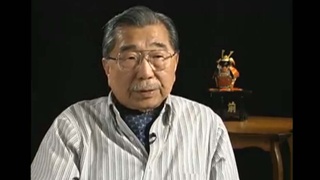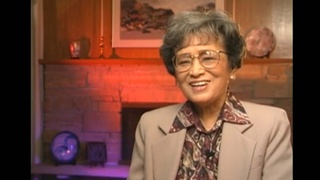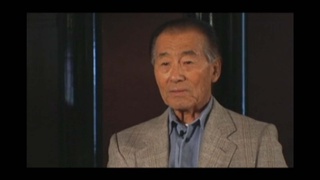Interviews
Issei are hard-working
Gee, when I stayed in camp and saw how hard the Issei’s worked and the young Nisei women who just had babies. Oh my gosh! I mean, I was so amazed that then I didn’t think much of caucasians—after that I thought, “Wow Japanese people are really industrious and they really take things well no matter how hard it is.”
Date: June 16, 2003
Location: California, US
Interviewer: Karen Ishizuka, Akira Boch
Contributed by: Watase Media Arts Center, Japanese American National Museum.
Explore More Videos

Hiding out to avoid the concentration camps (Spanish)
(b. 1932-2016) Peruvian painter

A Dutiful Son
(1918-2012) Fought the constitutionality of Executive Order 9066.

Bypassing the Constitution
(1918-2012) Fought the constitutionality of Executive Order 9066.


Erasing the Bitterness
(1923–2008) One of the leaders behind the redress movement.


Poignant story from the CWRIC hearing in San Francisco
(1917 - 2004) Political activist

Loyalty questionnaire
(1916-2010) draft resister, helped form the Heart Mountain Fair Play Committee

Speaking out in camp
(1916-2010) draft resister, helped form the Heart Mountain Fair Play Committee

Resisting transfer from Jerome
(1919 - 2006) World War II and Korean War veteran

Would do the same again
(1916-2010) draft resister, helped form the Heart Mountain Fair Play Committee

A visit to Jerome after OCS
(1919 - 2006) World War II and Korean War veteran

Traumatic experiences before camp
(1913-2013) Doctor specializing in obstetrics in Southern California

“Everybody went in like sheep”
(1913-2013) Doctor specializing in obstetrics in Southern California

Going to camp with the Terminal Island people
(1927-2010) Political Activist
